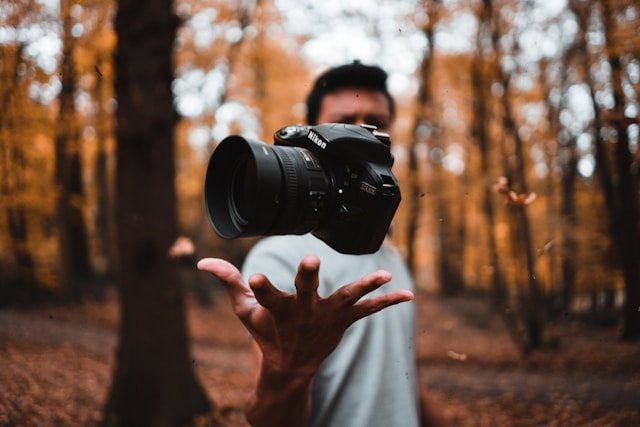Keyword: DSLR vs. Mirrorless Cameras
In the evolving world of photography, choosing between a Digital Single-Lens Reflex (DSLR) and a mirrorless camera is a pivotal decision. Both have unique features, advantages, and considerations. This article delves into the distinctions between DSLRs and mirrorless cameras to help you make an informed choice.
Understanding the Basics
- DSLR Cameras: These cameras utilize a mirror mechanism to reflect the image into an optical viewfinder. When you press the shutter, the mirror flips up, allowing light to hit the sensor and capture the image.
- Mirrorless Cameras: As the name suggests, mirrorless cameras lack this mirror mechanism. Instead, they rely on electronic viewfinders or the rear LCD screen to display the image directly from the sensor.
Size and Weight
Mirrorless cameras are generally more compact and lighter than DSLRs due to the absence of the mirror and optical viewfinder assembly. For instance, the Sony a6100 measures just 1.6 inches thick and weighs 1.3 pounds with its 16-50mm kit lens, making it more portable compared to bulkier DSLRs like the Nikon D5600.
Autofocus Performance
Modern mirrorless cameras have advanced significantly in autofocus capabilities. They often feature both phase-detection and contrast-detection autofocus points directly on the image sensor, providing faster and more accurate focusing, especially in live view and video modes. For example, the Sony a6100 boasts 425 phase-detection autofocus points, enhancing its ability to track moving subjects effectively.
Battery Life
DSLRs typically offer longer battery life compared to mirrorless cameras. This is because DSLRs use optical viewfinders, which consume less power than the electronic viewfinders and LCD screens found in mirrorless models. Many DSLRs are rated for over 800 shots per charge, whereas mirrorless cameras often range between 300-400 shots per charge.
Lens and Accessory Availability
DSLRs have been around longer, resulting in a broader selection of lenses and accessories. However, mirrorless systems are rapidly expanding their offerings. Additionally, many mirrorless cameras can use DSLR lenses with appropriate adapters, providing flexibility for photographers transitioning between systems.
Image Quality
Both DSLRs and mirrorless cameras are capable of producing high-quality images. The image quality largely depends on the sensor size and the quality of the lens used. Full-frame sensors are available in both types, offering excellent low-light performance and depth of field control.
Video Capabilities
Mirrorless cameras often have an edge in video recording. They typically offer better autofocus during video, higher frame rates, and advanced features like 4K recording. For instance, the Canon EOS R10, a mirrorless model, provides up to 15fps shooting with the mechanical shutter and 23fps with the electronic shutter, surpassing many DSLR capabilities.
Viewfinder Experience
- DSLRs: Utilize optical viewfinders, providing a real-time, lag-free view of the scene. This can be advantageous in fast-paced shooting environments.
- Mirrorless Cameras: Use electronic viewfinders (EVFs) or LCD screens, which can display exposure settings and other information in real-time. However, EVFs may introduce slight lag and consume more battery power. Digital Camera World
Conclusion
Choosing between a DSLR and a mirrorless camera depends on your specific needs and preferences. If you prioritize longer battery life and a wider selection of lenses, a DSLR might be suitable. Conversely, if you value a compact design, advanced video features, and cutting-edge autofocus, a mirrorless camera could be the better choice. Consider your photography style, subjects, and future growth when making your decision.




0 Comments